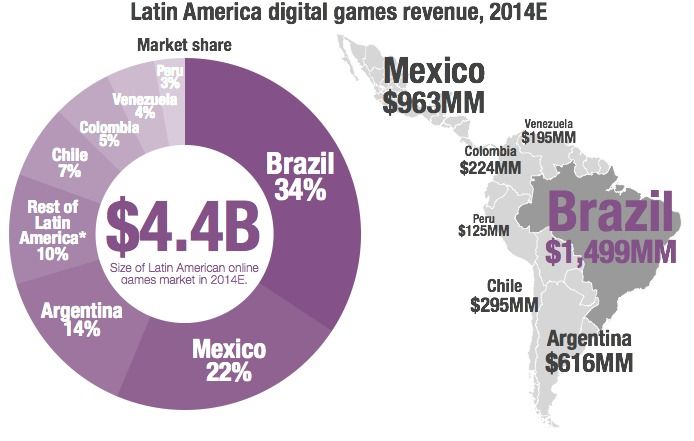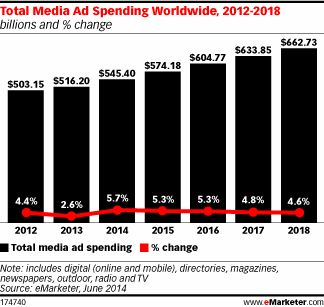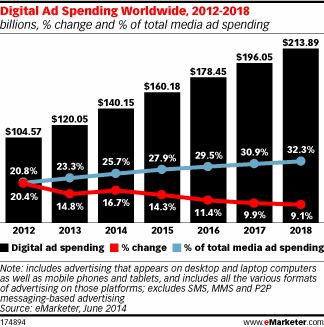In just the last year, there have been tremendous advances in audience segmentation in the mobile marketplace. This onslaught of Big Data has provided an unprecedented level of granularity for identifying which users will be most responsive to offers and messages. The panel brought together some top publishers and providers on how they’re leveraging big data to help marketers engage the right user in the right moment.
Particpants on the panel were Paul Longhenry, VP and GM for business & corporate development, Tapjoy; Mike Lu, VP product marketing, GREE; Fabien-Pierre Nicolas, GM mobile, Perfect World; and Omer Winkler, director of product marketing, AdTruth. Note: Part Two of this panel will appear on Monday.
There have been tremendous changes in the acquisition and utility of data in the past year. How has this impacted business and revenue?
 Paul Longhenry, Tapjoy
Paul Longhenry, Tapjoy
Paul Longhenry: In the early days, we were all really good at capturing data but we didn’t know what to do with it. Today, we not only capture data, but we’ve put the infrastructure and tools in place to not only analyze it and understand user segments, but to take action on that. We enable publishers and developers who carry our SDK to develop user segments to decide which users they should be marketing to and how certain users to monetize in general. Last year and a half, the data has become much more actionable, and all those investments in big data are starting to pay off.
Omer Winkler: The availability of data puts game developers in a position that they can become much more sophisticated as marketeers. A game developer’s ability to build strong user identification schema to understand users across channels is one of their biggest hurdles. How do you understand your audience that you view with different channels How you can create more of a panoramic view of a user set
Mike Lu: GREE has been doing this for a long time. In Japan, you used to break your users into 2 segments, people that spend and people that don’t. Back then you could buy users for like 40-50 cents each. Now CPC has gone up to $5-6 per user. In Japan it’s more like $12-15 per user. When the cost is so much higher, you have to dig deeper than just ‘did they buy anything or didn’t they buy anything’ to find out why and how the LTV can justify $6 on that average user to get that money back. So from the industry perspective because the cost is getting higher, you have to segment more.
Fabien-Pierre Nicolas: Trends for the past year, there’s been more transparency on user acquisition, but one complaint I have is that, if you look at the landscape of off-the-shelf solutions, there are a lot of tools that do one thing well like ad tracking, or analytics and push notifications, but there are few tools that do many things well, so that forces you to use many tools compared to the tools emerging in Asia. There’s also been few tools that let you act on the data, so even if you know this segment of users and how to monetize them, if I can’t do anything, if I can’t talk to them or if I need to do it manually, what good does the data do me
That raises an interesting point, the differences between what’s going on in Asia and with the tools, what publishers are doing there vs. what publishers are doing in the West. What can East learn from West and West learn from East, and what are the pros and cons of each region?
Fabien-Pierre Nicolas: I think what a few of the companies in the West have learned from the East, like Supercell and King , is once you’ve saturated the user acquisition market, you should go product marketing. Companies in Japan have been doing TV advertising and outdoor advertising for over 3 years. Now we are starting to see Supercell and King make massive investments in major markets during major sports events for example.
 Mike Lu, GREE
Mike Lu, GREE
Mike Lu: The tools here are somewhat limited, not by the fault of the companies themselves. It’s just that there’s not a single platform that they can all play on together. The East uses cellular carrier tracking. They work well with everyone and they kind of set a standard for tracking. But here, because you’re going through Apple, they don’t expose too much to second and third parties. So the tracking as well as monetization tools out there are limited on the different segments.
At GREE, we spend more money on advertising than the automakers in Japan, including Toyota, and we’ve mapped it out to a point where we can geotarget where we think mobile users will monetize more. Let me tell you it’s not in the city, it’s in rural areas where people tend to monetize more through TV advertising. Those things will come out more in the next few years here in the Western market.
Omer Winkler: Here in the West as a game developer you really are at the mercy of Google and Apple, and there are a lot of changes of what you can and cannot do in terms of user identification and what data you can share with 2nd and 3rd parties. We are seeing in the market today a trend shift that a lot of companies are realizing they have to build capabilities internally. There is a decision to be made as to whether you buy a solution or build it yourself. For many companies, the ownership of data is so important that they have to make sure that they protect themselves from data leakage, but definitely see a lot of companies specifically here in the West becoming very sophisticated. You mentioned King who is building a DSP (demand-side platform) for purposes of media buying across different channels and it’s very sophisticated how they view a user. They have a deep level of understanding of their users, how after acquisition they are retained and churned, and what type of monetization is best for them and how to optimize for that etc. I think this is something that we’ll see more of. I implore the crowd to filter, there are a lot of technologies out there, it’s really a matter of figuring out what works best for you.
Paul Longhenry: If you look at the US and Western European markets, early versions of big data were used principally for online advertising. Data management got started here and now they’re public companies that are reaching scale. There are a lot of companies like ourselves that work on behalf of brand advertisers, to enable that form of targeting, that data to influence their reach into mobile audiences across our platforms. If you look at the Asian markets where that hasn’t been as pervasive, not as much cash has gone into investing in that technology, but some of the most interesting investments have been in gaming. The whole free-to-play gaming space which is the core of our network, originally started in Korea, and then spread to Japan, and China, before it started to take off in Western markets.
 Fabien Pierre-Nicolas, Perfect World
Fabien Pierre-Nicolas, Perfect World
What we see as the next level of big data usage is for predictive modeling. When a game developer tries to deliver an ROI+ experience on your ad spend, it’s all about how do you make that data as actionable and predictable as possible. And whether the channels are networks like ours, or billboards, it needs to be somehow measurable in order for real spend and ROI to be unlocked and measured. So I think a lot of different channels are being explored and it’s still early.
Tapjoy is a lot more measurable than a billboard, that’s one of your key differentiators. We have massive amounts of data that we can collect, so how do we determine the right questions to ask of that data. How do we properly analyze it, and are the tools developing for that. Are we educating the marketers to ask better questions. Where are we at in that eternal competition of data vs analysis?
Paul Longhenry: It depends on the vertical. For some, content or commerce verticals where best practice dictates what the best questions are, then you’ll see tools that emerge that prepackage those so that mid and long tail content developers have a solution that guides them into the process of asking this question and taking this action based upon the results. When you talk about new market variables that you’re breaking into, or like a new ad model in our case, it’s very difficult to know which questions to ask because there’s not a tool that would’ve been built to ask them for you. So from our perspective, we put lot of emphasis into machine marketing. The tool becomes all about adding flexibility to uncover the questions that matter, to run correlations between data sets such that the overall platform can surface insights to you that consumers or advertisers can take action on, that’s really the heart of where big data is going. It’s all about capturing the data and telling you what you wouldn’t have thought to ask.
Omer Winkler: It really is also a matter of do you have the right linkage capabilities, can you make this action, can you connect the dots to make sense of the data that you have gathered A lot of times you will find yourself with silos of data. With data segmentation such a pain, if you cant turn down these silos to activate this data to apply in an environment, then you’ll be in a position that you have collected data for the mere collection of data. If we are seeing a lot of tools today that help different companies link different data elements together to come at a decision whether you ask the right question or not, I can tell you that you definitely have tools at your disposal that will help you activate the data in the context of whatever you’re trying to do whether it’s a UA program, a monetization program, etc.
 Omer Winkler, Adtruth
Omer Winkler, Adtruth
Because you can be collecting data from a website as well as mobile, but you don’t have a unique user ID that stretches across, it’s not trivial to connect those data sets and that why it’s necessary.
Omer Winkler: That’s a very good example. Just look at the mobile channel, it’s very fragmented. You have mobile web experiences, you have native experiences, and in terms of user identification, these are two separate environments. If you don’t employ technologies that allow you to bridge between these environments, either at the device level or at the user login, then you are left with two views of one user journey which is ineffective.
Fabien, one of the things Perfect World is doing on the PC side is having unified login to their Arc platform, and I don’t know if you’re using that on the mobile side or trying to use a unified login to gather data from these various sources. What is your view on that?
Fabien-Pierre Nicolas: So we definitely are starting to use the same login across mobile, PC and console and comparing if it’s more profitable to acquire users on the PC side to channel them back to the mobile side, and the other way around, treating them country by country. Like the US, especially in mobile is really high, whereas on the web side it’s more reasonable to get core gamers in, so it’s one strategy we’re applying across the platform. We do look through the funnel at a lot of things, then solve that by country, by device, comparing which UA channel is better and whether it’s worth doubling down on cross promotion in the channel.
Mike, what’s your perspective on this You don’t have a PC game environment to worry about, but are you getting data from different sources that you’re trying to correlate?
Mike Lu: Yeah. Regardless if you make a game, photo, or shopping app, the common language all apps share is retention. Do your users come back the next day If you look at Whatsapp, Mark Zuckerberg himself is quoted as saying he’s never seen an app with retention as high as Whatsapp and that’s why he bought the company. That’s the number one metric we look at, are people coming back to your app and it doesn’t matter if it’s a game or Instagram, that’s the most important metric.
Think of your business like a leaking bucket, and the hole at the bottom of your bucket is retention, how big that hole is determines how much water you can fill in, so that regardless of what the app is, what the bucket can hold is the most important metric.
Tune in for Part Two of this discussion on Monday!
 Image courtesy SuperData
Image courtesy SuperData
 Paul Longhenry, Tapjoy
Paul Longhenry, Tapjoy Mike Lu, GREE
Mike Lu, GREE Fabien Pierre-Nicolas, Perfect World
Fabien Pierre-Nicolas, Perfect World Omer Winkler, Adtruth
Omer Winkler, Adtruth

